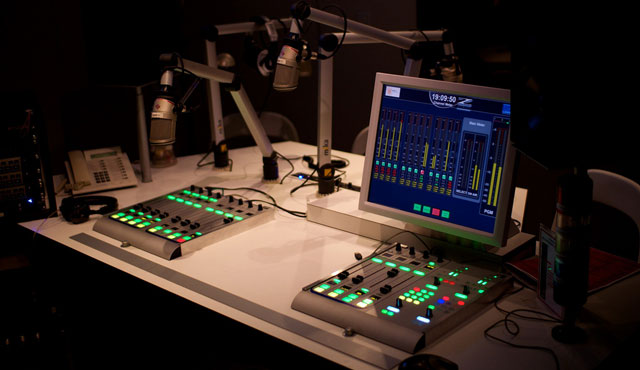
A David and Goliath-style statistics battle has broken out online, calling into question everything we thought we knew about streaming radio in SA.
A technical specialist with a part-time blog has blown the lid off what appears to be the gross inflation of listenership numbers for SA streaming radio stations.
Following a piece published by IT specialist Shaun Dewberry on Tuesday, Internet streaming service provider NetDynamix has admitted the numbers it provides to its clients — including the country’s top two online radio stations 2oceansvibe and Ballz Visual Media — might not be an accurate representation of its listenership.
The revelation came in the form of a press release, which explains that the company provides numbers to its clients based on “sessions”. A session refers to a connection to a server in order to receive an audio or video stream. It does not take into account whether the same user may be initiating multiple sessions, which may happen if, for example, a user was disconnected from the Internet and had to reconnect, or switched from one device to another.
But reports provided to clients, such as 2oceansvibe, clearly label the numbers as “total listeners”.
In an interview on 2oceansvibe on Wednesday evening, NetDynamix GM Hanz Stricker said: “That is a miscommunication from our part from that time, taking a statistic based on sessions and calling it listeners.”
But Stricker argued that there is a “strong correlation” between the two numbers. “So far our research shows that there’s a small difference between the two and in future we’re probably going to publish both so people can make up their own minds,” he said.
The company said it has identified independent experts to verify its statistics.
Meanwhile, 2oceansvibe co-founder Richard Hardiman said that news that its listenership statistics may not be accurate was “horrific”.
“We were definitely stunned and taken off guard,” he said. “That session number was given to us as a listener number. They’ve now, since this debacle, come out and said to us that’s a session number,” said Hardiman.
Hardiman said the listenership numbers 2oceansvibe had used in the past were provided by NetDynamix and had been used in good faith. “We run a good business here and we trust our partners. Our partners came highly regarded. We had no reason to disbelieve their figures,” he said.
Hardiman said 2oceansvibe has asked NetDynamix to explain its numbers in greater detail. “We’re giving them the benefit of the doubt and are letting them come up with the figures. We have no reason to mistrust them,” he said.
But Hardiman added he believed that the mistake was not as great as it was being made out to be and that the sector could bounce back. “It’s a new industry and these mistakes are going to be made,” he said.
Some advertisers have raised questions about the statistics in light of the allegations, and the station has responded by offering them the option of putting deals on hold until it has more concrete facts. Hardiman said only one advertiser so far has taken the option.
He said the revised numbers shouldn’t impact on business too greatly as the 2oceansvibe offers advertisers a “package deal” which makes use of streaming radio listeners as well as other value-adds like visitors to the website and its social media platform.
The scandal has highlighted the need for better metrics and standards to quantify streaming radio listenership figures. The difference in the numbers is purported by Dewberry to be massive — not tens of thousands at peak times but rather just a few hundred.
Dewberry made the allegations in a report posted on his blog titled “The truth behind streaming Internet radio in SA”. The truth, according to Dewberry, was that the numbers had been misrepresented.
His report noted the “mysterious and sudden growth” in listenership when niche Port Elizabeth-based radio station Kingfisher FM grew from 1 000 listeners in December last year to 20 000 by March.
Dewberry did some digging around statistics for the country’s top online radio stations and, after crunching some numbers and referencing online statistics, decided there could be only one reason for the inflated listener numbers. “They are complete fabrications, utter nonsense, lies even,” he wrote.
The report lead to an uproar online. His figures were interrogated by several media websites, including Memeburn. Other technical experts have also come to Dewberry’s defence.
Following the controversy, the Digital Media and Marketing Association of SA (DMMA), which provides audited statistics to websites and online publishers, announced that it would work with major stakeholders to determine the needs of the industry around digital radio metrics.
“Based on this information, [we] will work with a selected measurement provider to allow digital radio publishers to accurately report DMMA approved metrics,” it said in a statement published on Tuesday.
But NetDynamix’s immediate response to the news was to threaten to sue Dewberry for defamation. As online support for Dewberry grew, the company later backtracked.
Dewberry was also called for an impromptu interview by sports personality Darren Scott — founder of BallsVisual Radio — and was ridiculed on air.
World Wide Worx MD and technology analyst Arthur Goldstuck criticised the initial responses, saying they were blustering, evasive and came across as “an over-the-top attempt to silence criticism”.
“When you see that kind of response, and little answering to the real issues raised, then you have to consider whether the response is being driven by ego or by real concern with the facts,” he said.
Goldstuck said that although people have in the past been dubious about the claimed listenership numbers for streaming radio, no one has questioned them until now because they’ve had no basis on which to challenge the numbers.
He said that although people have been dubious about the claimed listenership, they’ve had no basis on which to challenge the numbers.
“It requires both technical analysis and the ability to interpret a wide variety of data. Dewberry was up to the first requirement but fell a little short on the second, and that’s where the radio stations are trying to nail him, without addressing the real issue,” he said.
Dewberry, who moonlights as a technician at a small Internet radio station called Interwebsradio, has not backed down from the criticism. “I want to play in a fair field, where everyone’s playing the same game,” he said.
He told the M&G that putting inflated numbers before advertisers was unfair to other streaming radio stations and that he believed there had been a deliberate attempt make it seem as though streaming radio is a lot more popular than it actually is.
“It’s pretty cut and dried when it comes to listener stats. You can tell how many listeners are connecting to your servers [and] it’s very difficult to accidentally get your listenership figures wrong,” he said. “[NetDynamix’s] numbers make it seem as though streaming radio is a huge thing in this country. It will be, but it isn’t yet.”
Despite the legal threats and refutations, Dewberry still believes that the core of this argument is sound. “The issue is, how many people listen to streaming radio? I think I’ve provided proof [of that] and I don’t think NetDynamix have done that.” — (c) 2012 Mail & Guardian
- Visit the Mail & Guardian Online, the smart news source




